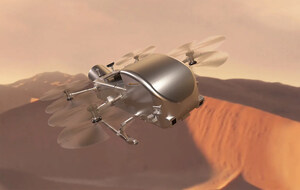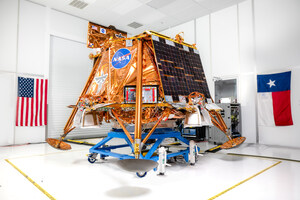WASHINGTON, Dec. 1, 2014 /PRNewswire-USNewswire/ -- NASA has approved the completion of Boeing's first milestone in the company's path toward launching crews to the International Space Station from the United States under a groundbreaking Commercial Crew Transportation Capability (CCtCap) contract.
The Certification Baseline Review is the first of many more milestones, including flight tests from Florida's Space Coast that will establish the basis for certifying Boeing's human space transportation system to carry NASA astronauts to the space station. The review established a baseline design of the Crew Space Transportation (CST)-100 spacecraft, United Launch Alliance Atlas V rocket, and associated ground and mission operations systems.
"The work done now is crucial to each of the future steps in the path to certification, including a flight test to the International Space Station," said Kathy Lueders, manager of NASA's Commercial Crew Program. "This first milestone establishes an expected operating rhythm for NASA and Boeing to meet our certification goal."
On Sept. 16, the agency unveiled its selection of Boeing and SpaceX to transport U.S. crews to and from the space station using their CST-100 and Crew Dragon spacecraft, respectively. These contracts will provide U.S. missions to the station, ending the nation's sole reliance on Russia and allowing the station's current crew of six to grow, enabling more research aboard the unique microgravity laboratory.
The CCtCap contracts are designed for the companies to complete NASA certification of their human space transportation systems, including a crewed flight test with at least one NASA astronaut aboard to verify the fully integrated rocket and spacecraft system can launch from the United States, maneuver in orbit, and dock to the space station, as well as validate all its systems perform as expected. Once the test program has been completed successfully and the systems achieve NASA certification, the contractors will conduct at least two, and as many as six, crewed missions to the space station. The spacecraft also will serve as a lifeboat for astronauts aboard the station.
During the review, Boeing provided NASA with a roadmap toward certification, including its baseline design, concept of operations and management and insight plans. The Boeing team also detailed how the CST-100 would connect with the station and how it plans to train NASA astronauts to fly the CST-100 in orbit.
"It's important for us to set a robust plan for achieving certification upfront," said Boeing Commercial Crew Program Manager John Mulholland. "It's crucial for us to achieve our 2017 goal, and the plan we've put in place will get us there."
By expanding the crew size and enabling private companies to handle launches to low-Earth orbit -- a region NASA has been visiting since 1962 -- the nation's space agency can focus on getting the most research and experience out of America's investment in the International Space Station. NASA also can expand its focus to develop the Space Launch System and Orion capsule for missions in the proving ground of deep space beyond the moon to advance the skills and techniques that will enable humans to explore Mars.
For more information about NASA's Commercial Crew Program, visit:
http://www.nasa.gov/commercialcrew
Logo - http://photos.prnewswire.com/prnh/20081007/38461LOGO
To view the original version on PR Newswire, visit:http://www.prnewswire.com/news-releases/boeing-completes-first-milestone-for-nasas-commercial-crew-transportation-systems-300002779.html
SOURCE NASA
Related Links
WANT YOUR COMPANY'S NEWS FEATURED ON PRNEWSWIRE.COM?
Newsrooms &
Influencers
Digital Media
Outlets
Journalists
Opted In






Share this article